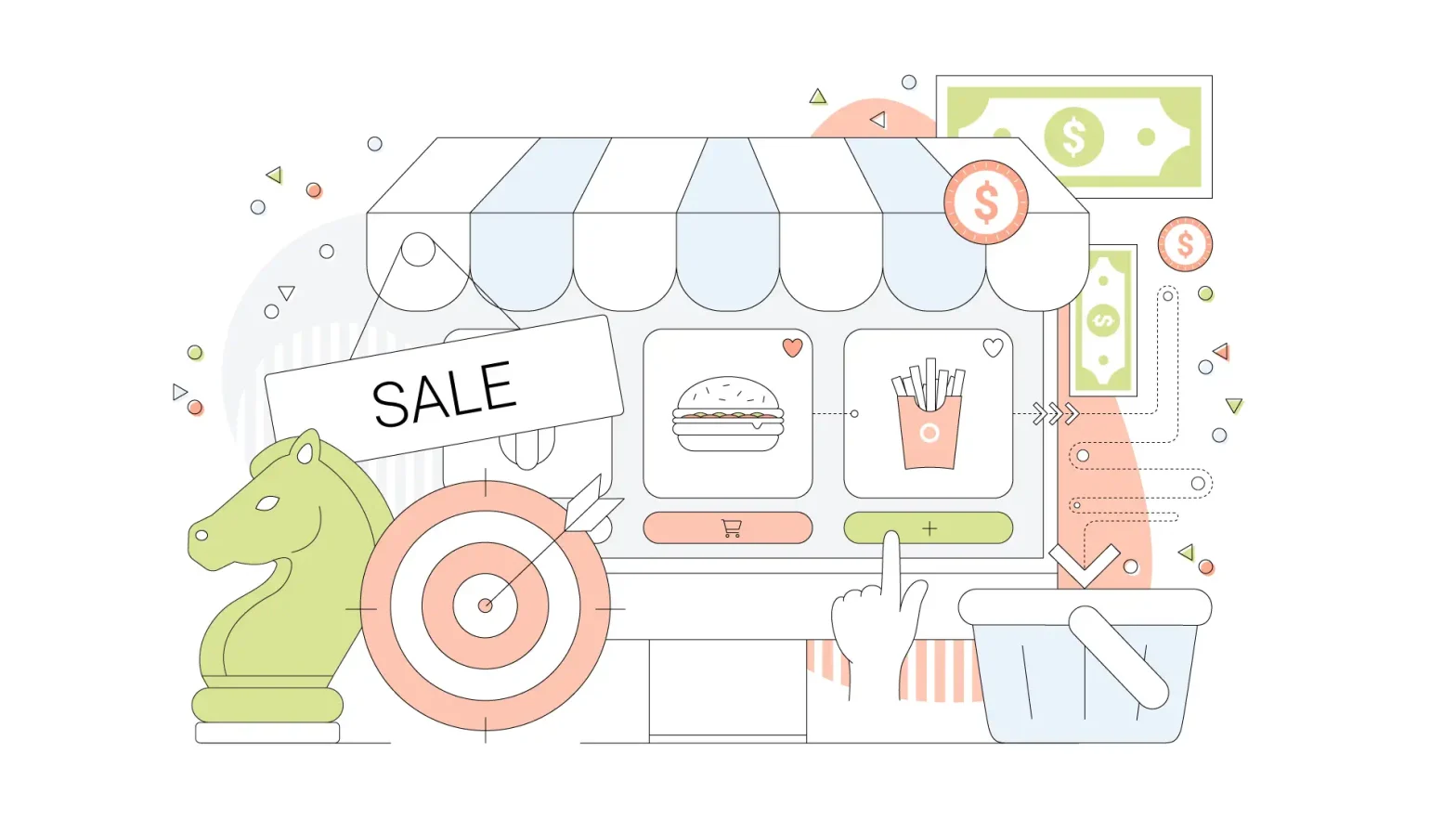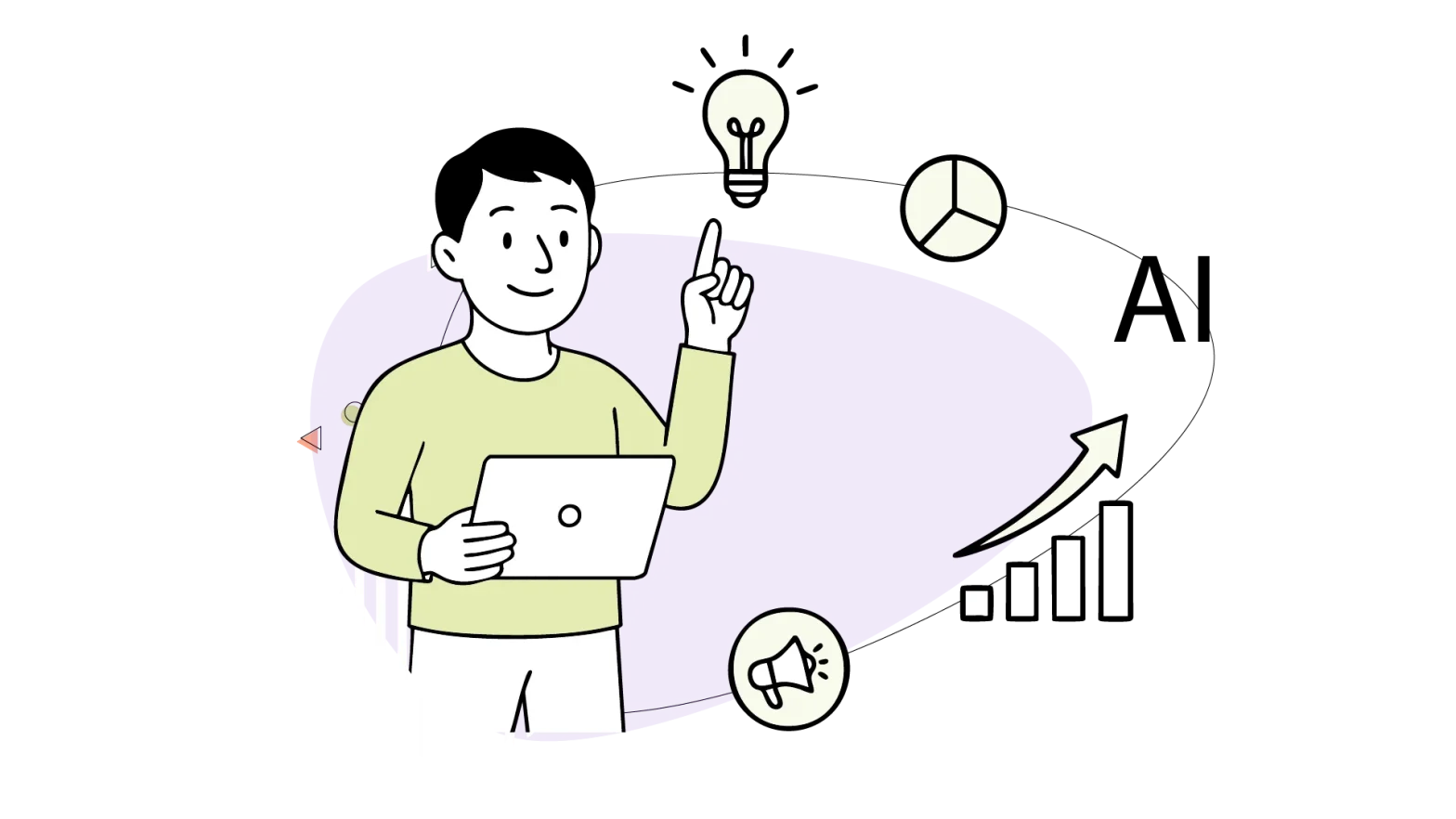Most companies engage in upselling, a practice that plenty of times can go unnoticed by customers.
When it comes to marketing lingo like profit margins, discount percentages, and perceived value, upselling strategies may seem more difficult to grasp.
Upselling and cross-selling are two powerful techniques that you should consider regardless of whether you’re just starting out with our Do-It-For-Me service or are an experienced eCommerce business owner.
If you’re not sure what these mean or which one is right for your business, we’ve got you covered.
Our latest blog post is all about upselling and cross-selling, and we can’t wait for you to read it!
- What Is Upselling?
- The Best Upselling Strategies to Boost Sales
- A Swift Website For Faster Recommendations and Boosted Sales
- The Do-It-For-Me Example: The Easiest Way to Sell Online
- Set The Stage: Identify Customer Needs To Recommend Relevant Products
- Examples of Upselling
What Is Upselling?
When you’re at a restaurant, and your waiter suggests adding fries and a drink to your burger order, that’s upselling. It’s the art of convincing a customer to purchase a more expensive or upgraded version of what they’re already buying, enhancing their experience.
On the other hand, cross-selling is like when the same cashier suggests adding a dessert to your meal – it’s offering complementary or related products to enhance the customer’s purchase.
Upselling and cross-selling are valuable sales techniques that aim to increase the value of each transaction and boost overall revenue for businesses.
They’re about providing customers with additional options or upgrades that meet their needs and preferences while benefiting the seller.
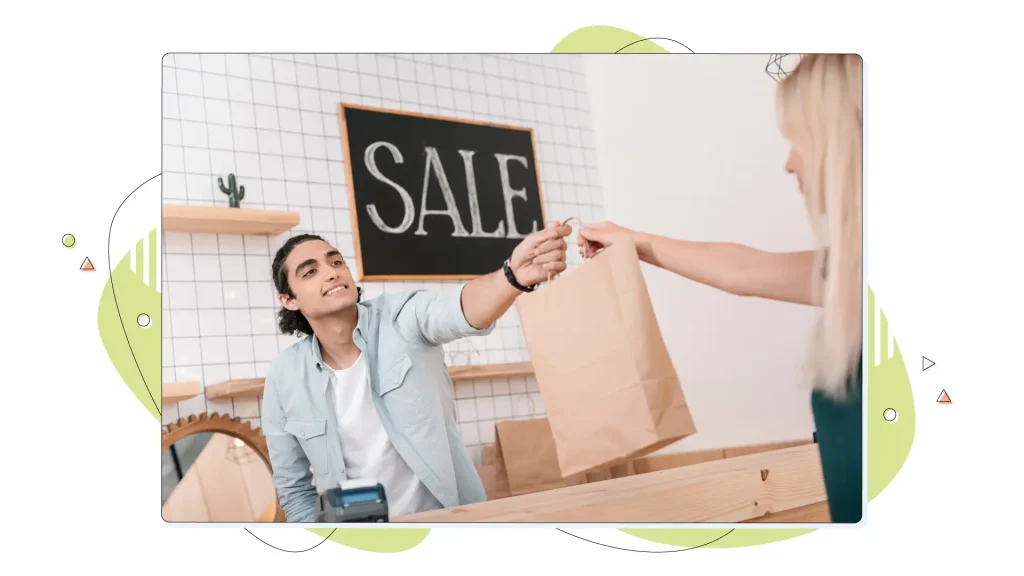
Using Customer Data for Effective Upselling Techniques
One of the keys to successful upselling and cross-selling is understanding your customers’ preferences, behaviours, and purchase history. This is where leveraging customer data becomes crucial.
Businesses gain valuable insights by analyzing past customer purchases, browsing history, and demographics. This allows them to tailor upselling and cross-selling offers to each customer, increasing the likelihood of a successful sale.
For example, if an existing customer has previously purchased a basic version of a product, businesses can use this information to upsell them on the premium version during their next visit.
Similarly, businesses can identify related products or accessories to cross-sell alongside their primary purchase by analyzing existing customers’ purchase histories.
These upselling techniques can increase customer satisfaction and sales in the process.
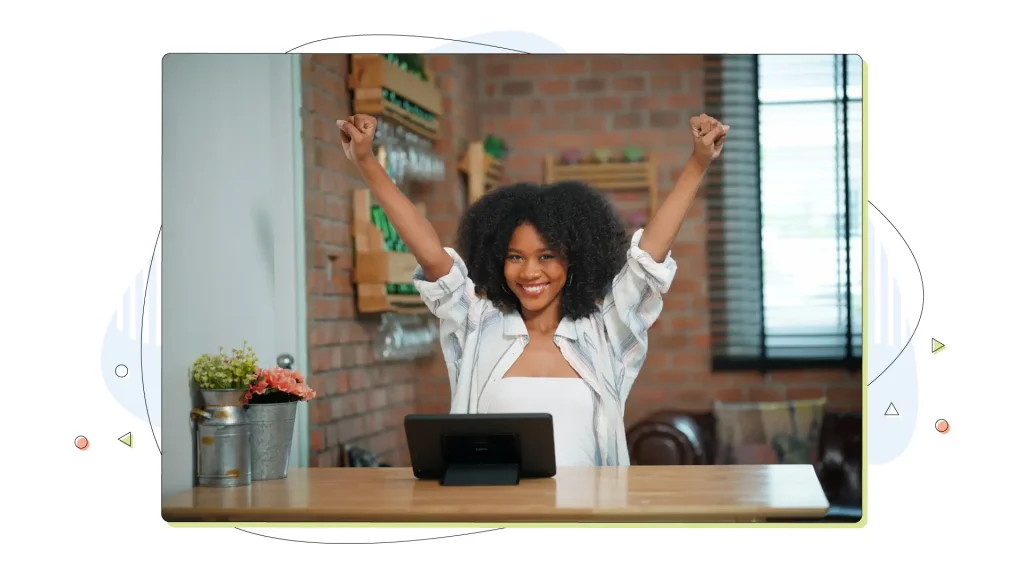
How to Avoid Being Pushy When Upselling
Upselling is an effective way to increase revenue and improve customer satisfaction, but it can take time to execute properly. No one wants to feel like they’re being pushed into buying something they don’t need or want.
Here are some tips to help you avoid being pushy when upselling:
- Focus on the customer’s needs: Instead of trying to sell them something they don’t need at the moment, focus on what they’re already interested in and how you can enhance their experience. Listen to their needs and concerns and offer solutions that meet those needs.
- Use persuasive language: When presenting an upsell, use language that highlights the benefits of the product or service. Explain how it will improve the customer experience and make their life easier. For example, mention what your product achieves and which problems it solves with a well-written product description. It will help potential buyers to understand what you’re offering.
- Be less aggressive: Pushing too hard can backfire and turn the customer off. Be respectful of their decision, and try not to force the sale.
- Provide upsell options: Give the customer a few options to choose from so they feel they have control over the decision.
- Offer discounts or promotions: Offering a discount or promotion can make the upsell more appealing and less pushy.
Remember, the key to successful upselling is to focus on the customer’s needs and provide solutions that improve their experience.
Doing so will create a more positive and trusting relationship with your customers, leading to more customer lifetime value. This metric is totally connected to the profits you can make per customer.
The Best Upselling Strategies to Boost Sales
Now, let’s check out some interesting upselling strategies you can use to increase sales that apply to any eCommerce store.
- Personalize your offers: Use customer data to tailor upselling offers based on past purchases, preferences, and behaviour. It’s easy to have a great recommendation system on your site. WooCommerce, for instance, has a specific recommendation plugin for that purpose.
- Highlight premium features: Showcase the additional benefits and features of an upgraded or premium version to entice customers to upgrade. For example, a comparison chart makes exploring the benefits easier for your customers.
- Bundle multiple products: Offer bundled products or packages at a discounted price to encourage existing and new customers to purchase additional items together.
- Tiered pricing: Implement tiered pricing structures that incentivize customers to opt for higher-priced options by offering increased value or benefits. More value for your customers means more money for your business.
- Leverage social proof: Use testimonials, reviews, and endorsements to demonstrate the value and benefits of upselling options, increasing perceived value. This can work extremely well with influencer marketing.
- Create urgency: Use limited-time discounts or offers to create a sense of urgency and prompt customers to purchase. Adding countdown timers and other relevant elements can create a sense of urgency that helps with upselling.
- Offer add-ons: Suggest relevant add-ons or accessories that enhance the customer’s primary purchase, increasing the average order value.
- Optimize product pages: Include upselling options and related products on product pages to encourage customers to explore additional offerings.
- Streamline checkout process: Make upselling offers seamlessly integrated into the checkout process, ensuring they are easy to understand and act upon.
- Provide incentives: Offer incentives such as loyalty points, discounts, or freebies for customers who choose to upgrade or purchase additional items.
- Use cross-selling techniques: Identify opportunities to cross-sell complementary products or services that enhance the customer’s overall experience.
- Personalized recommendations: Use AI algorithms or recommendation engines to suggest relevant upselling options based on customer preferences and browsing history.
- Post-purchase follow-up: Follow up with customers after their initial purchase with targeted email campaigns offering exclusive upselling deals or discounts.
- Monitor and analyze performance: Continuously track and analyze upselling efforts to identify the most effective strategies and optimize accordingly.

A Swift Website For Faster Recommendations and Boosted Sales
Of course, we have to mention the big part a reliable web hosting provider plays in ensuring your eCommerce business works like clockwork.
There’s a sea of opportunity ready to be discovered for businesses just starting out. Starting out with a simple yet feature-packed shared hosting plan ensures you’re on the right track for the future.
With scalability in mind, you can expand as needed from Start to Ultra and gain those important server resources for your new customers.
What’s more, with added server resources, you will never have to think twice when setting up your recommendation system. On WordPress, it’s easy with the help of additional plugins that work with the set-it-and-forget-it logic.
The Do-It-For-Me Example: The Easiest Way to Sell Online
When you’re low on time and want the quickest results, you can try the Do-It-For-Me website service from HostPapa.
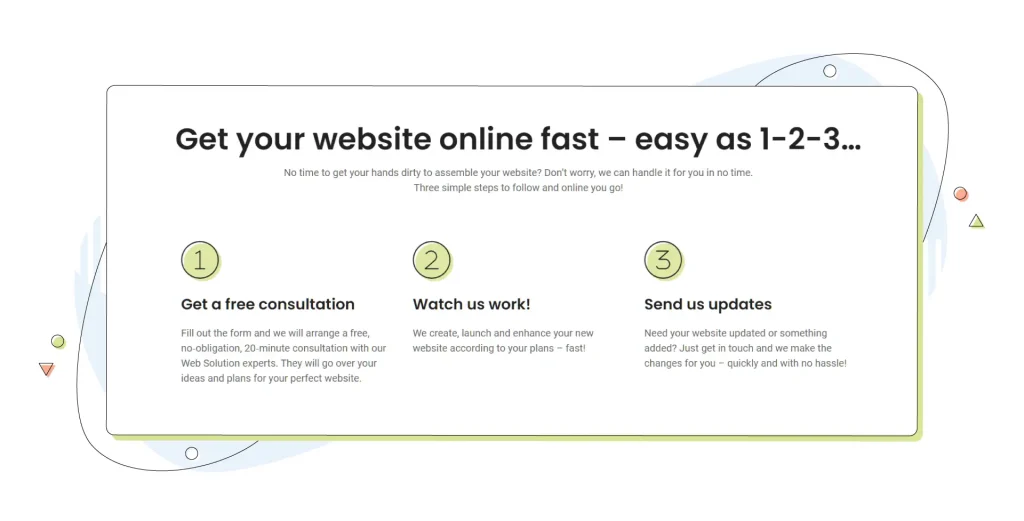
DIFM takes your dream to a team of professional designers who will make it happen in a matter of days. It’s a completely managed service, allowing you to save valuable time by not having to learn a website building tool or recruit and manage a design firm, which will cost you thousands of dollars.
We do it all for you at a fraction of the price and, more importantly, allow you to focus on what you do best – running your business.
For more information, take a look at HostPapa’s DIFM and bring your website online now!
Set The Stage: Identify Customer Needs To Recommend Relevant Products
It’s easy to increase sales in eCommerce by using customers’ data to provide suggestions. It’s also great to add product recommendations widgets to a page that can be easily searched for and encourage consumers to use it.
Naturally, good suggestions should satisfy the client’s needs. The application may look up customers with similar search histories and show how much other customers buy. Amazon demonstrates what other users buy when they have similar wants to sell them.
This recommendation has no intrusions but is a more attractive suggestion than a pushy advertising strategy.
Examples of Upselling
When upselling, you advertise more expensive goods, services, or package deals. There’s an art to it.
If the user is looking for an affordable smartphone and wants an upgrade, it might be better for the customer to get one of these mid-range and premium phones.
Upselling at The Checkout Page
Did you know that you can offer additional products to customers when they’re about to pay and complete their purchase? This is another way of upselling, which is used by many online businesses.
During checkout, businesses often highlight other products or promotions that complement the items customers have already chosen. For example, if a customer is buying a set of kitchen knives, they might be offered a knife sharpening device to enhance the performance of their purchase.
Offering a last-minute extra discount code can be a great way to entice customers to provide their email and receive a 10 or 15% discount on their purchase. This may encourage them to add more items to their cart to meet the minimum purchase threshold for the discount, thereby increasing your overall sales.
However, it’s important to ensure that the discount is still profitable for your business and doesn’t negatively impact your margins. Additionally, make sure that your customers understand the terms and conditions of the discount to avoid any confusion or dissatisfaction.
By suggesting these additional products at checkout, businesses can provide customers with valuable options to enhance their shopping experience and get more out of their purchases.
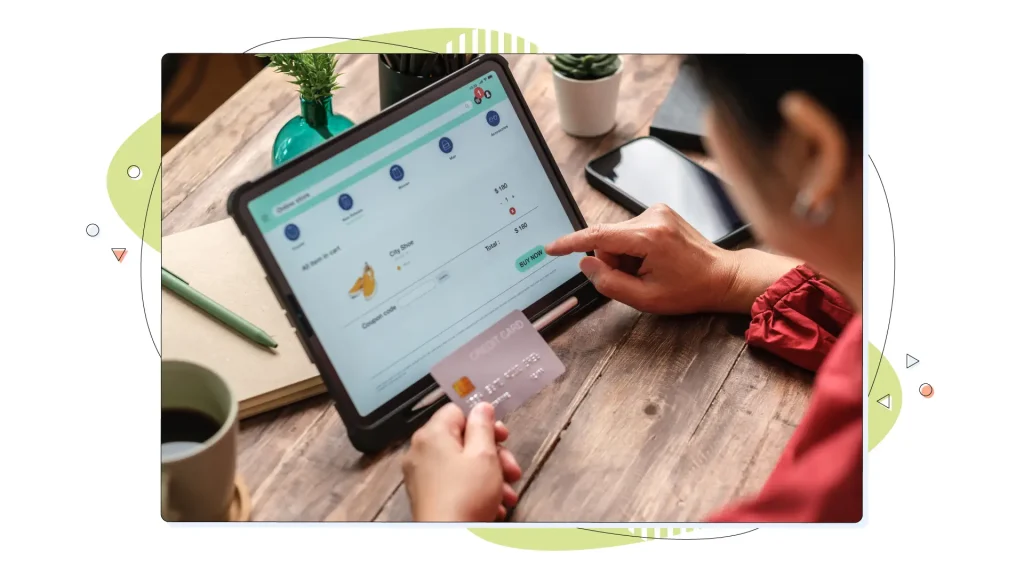
Preach Benefits, Not Features
Understanding sales psychology involves tapping into human emotions by highlighting “improvements.” People tend to purchase products they perceive as beneficial and versatile.
Salespeople need to recognize that customers will only buy from them if they see value in the purchase. Customers’ actions are motivated by a desire to improve their lives somehow. Therefore, it’s important to upsell products that genuinely enhance people’s lives.
Offer Your Product’s Premium Version for a Limited Time
A great method to entice people to upgrade to a limited-time freemium offer is through trials.
Many customers choose to upgrade after experiencing premium features firsthand. By segmenting users, you can identify those actively engaging with the technology.
Power users deeply invested in your software stand to gain the most from premium features.
For example, a company could implement in-app modals or notifications to showcase these high-end functions to power users, effectively demonstrating the additional value they would receive by upgrading to the premium version.
Conclusion: Use Personalized Recommendations
Personalized recommendations play a crucial role in the upselling process, but it’s important to remember that not every customer will respond in the same way.
While leveraging customer data to tailor offers can significantly increase the likelihood of a successful upsell, it’s essential to recognize that individual preferences and behaviours vary.
Therefore, businesses should strive to offer a diverse range of upselling options to cater to different customer needs and preferences.
By providing personalized recommendations while acknowledging the diversity among customers, businesses can effectively maximize upselling opportunities and enhance overall sales performance.
Enjoyed this article? Join HostPapa’s Blog to read more exciting topics like this one!
